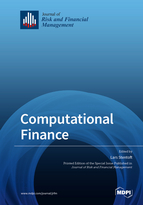Computational Finance
A special issue of Journal of Risk and Financial Management (ISSN 1911-8074). This special issue belongs to the section "Mathematics and Finance".
Deadline for manuscript submissions: closed (30 August 2019) | Viewed by 50600
Special Issue Editor
Interests: finance; financial econometrics; computational finance; econometrics
Special Issues, Collections and Topics in MDPI journals
Special Issue Information
Dear Colleagues,
This Special Issue focuses on the broad topic of “Computational Finance” and includes novel research on the use of computational methods and techniques for modelling financial asset prices, returns, and volatility, and in the pricing, hedging, and risk management of financial instruments.
Theoretical and empirical articles on the application of novel computational techniques in estimation, simulation, optimization, and calibration with applications to asset pricing, derivative valuation, hedging, and risk management are welcome.
Contributions focusing on multivariate or high-dimensional applications in today’s complex world, novel measures of financial risk, and other types of risks implied from derivative markets, and on the use of high-frequency data of all sorts, are encouraged.
Prof. Dr. Lars Stentoft
Guest Editor
Manuscript Submission Information
Manuscripts should be submitted online at www.mdpi.com by registering and logging in to this website. Once you are registered, click here to go to the submission form. Manuscripts can be submitted until the deadline. All submissions that pass pre-check are peer-reviewed. Accepted papers will be published continuously in the journal (as soon as accepted) and will be listed together on the special issue website. Research articles, review articles as well as short communications are invited. For planned papers, a title and short abstract (about 100 words) can be sent to the Editorial Office for announcement on this website.
Submitted manuscripts should not have been published previously, nor be under consideration for publication elsewhere (except conference proceedings papers). All manuscripts are thoroughly refereed through a single-blind peer-review process. A guide for authors and other relevant information for submission of manuscripts is available on the Instructions for Authors page. Journal of Risk and Financial Management is an international peer-reviewed open access monthly journal published by MDPI.
Please visit the Instructions for Authors page before submitting a manuscript. The Article Processing Charge (APC) for publication in this open access journal is 1400 CHF (Swiss Francs). Submitted papers should be well formatted and use good English. Authors may use MDPI's English editing service prior to publication or during author revisions.
Keywords
- asset pricing models
- calibration
- derivatives
- hedging
- multivariate models
- optimization
- prediction
- risk management
- simulation
- volatility





